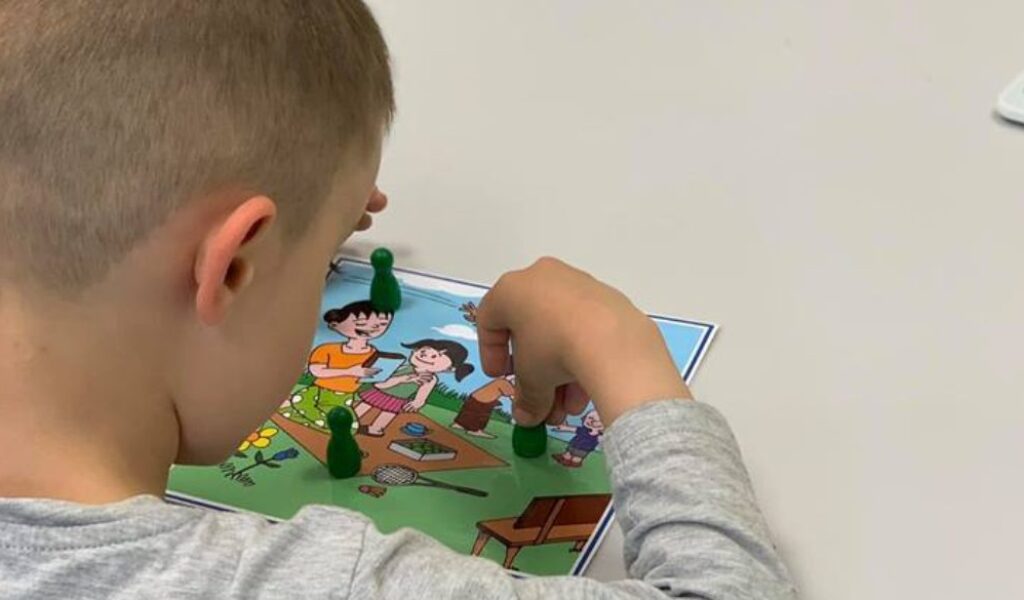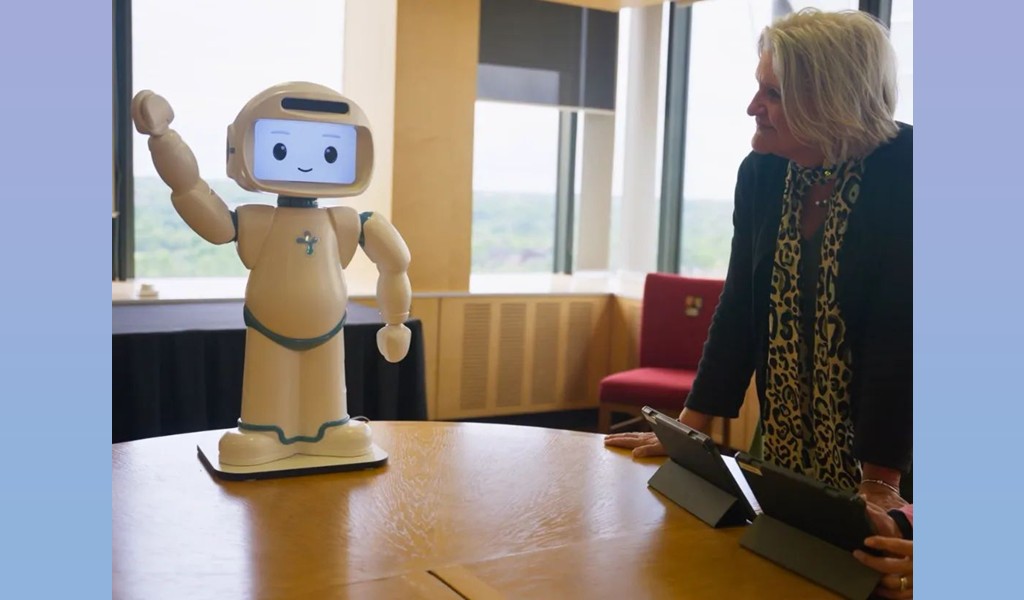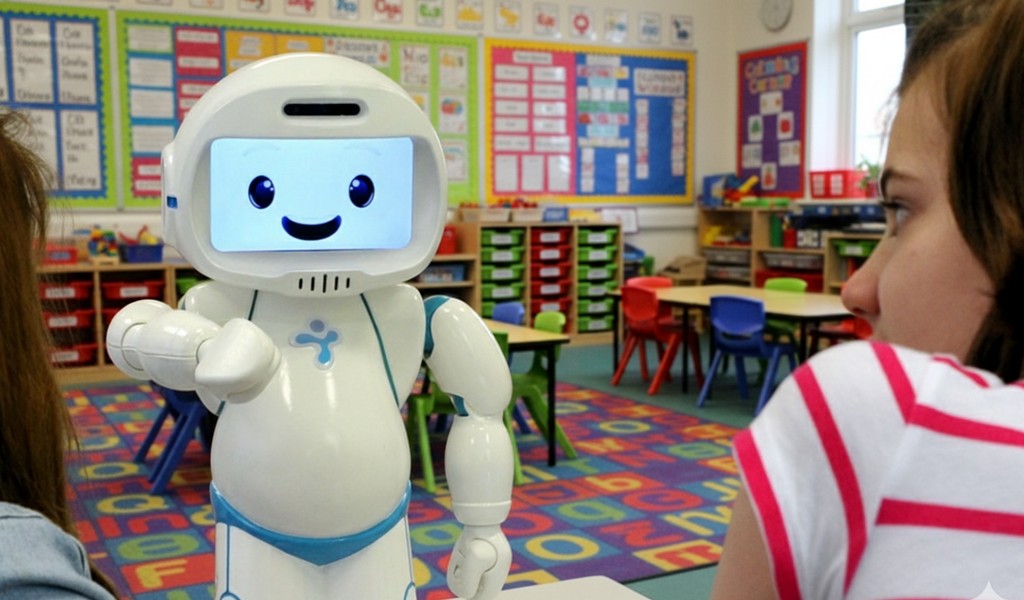Turn-taking is a skill that plays an important role in social success. Often children with autism struggle with the concept of taking turns and sharing toys, leading to difficulties when playing with peers and friends. However, we can use a variety of interactive games for teaching turn taking to children with autism.
Some tips before starting to teach turn-taking to children with autism:
To effectively teach turn-taking, we should make sure children:
- Understand why they need to take turns,
- Understand when they need to take their turn,
- Have self-regulation skills to handle waiting when it is not their turn,
- Know how to properly demonstrate turn taking in playing with others.
When teaching turn-taking to a child with autism, it’s also critical to consider the child’s developmental level and language skills. With younger children or those on the more severe side of the autism spectrum, we want to avoid using lots of verbal instruction when teaching turn taking. Instead, we can focus more on using the turn taking gestures and visual cues.
However, with older and more high-functioning children we can just explain to them why, when and how we take turns.
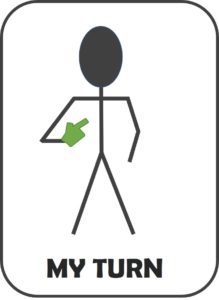
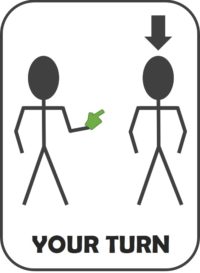
When teaching turn-taking to an autistic child, we can follow these steps:
Step 1. Use The Social Narratives To Introduce The Social Understanding And Expectations Of Turn Taking:
Social stories are used to model a proper social behaviour by explaining the situation and recommending appropriate behaviour. Social narratives use very simple vocabulary, often combined with simple visuals, and they are designed to prepare the learner for social situations in order to know exactly how to react to various social situations.
You can download a few examples of social narrative to teach turn taking and sharing below:
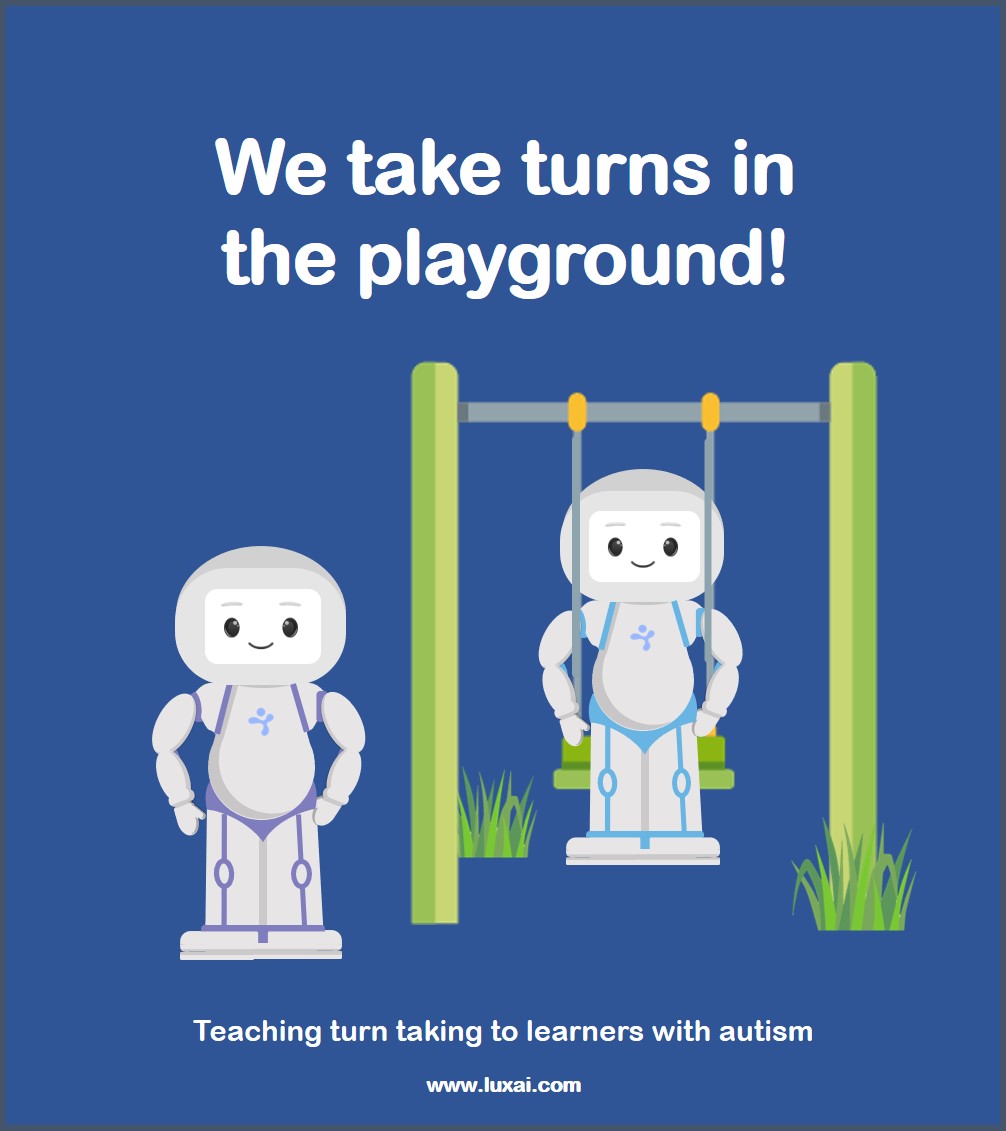
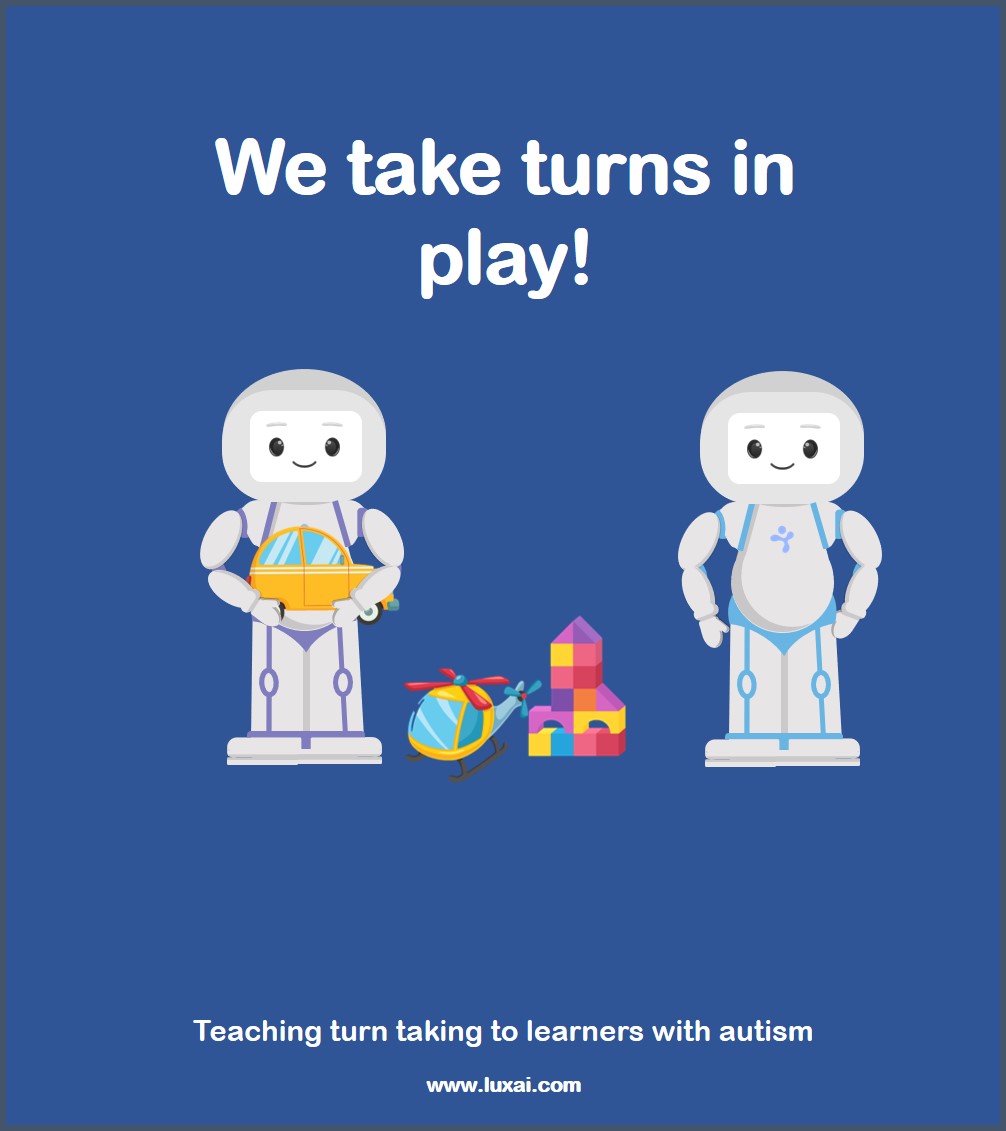
Step 2. Use Modeling/Video Modelling For Teaching Turn-Taking:
Video modeling is a method used to teach a behavior or a skill by watching a video of someone demonstrating the proper behavior or skill. By showing them favorable behavior, we can ask the child to imitate the same behavior.
Step 3. Use Meaningful And Engaging Games Which Need Taking Turns:
Try to use everyday life activities to practice turn taking. There are many easy and engaging games for this purpose. For example, you can take turns while making a noise. Use a drum or a plastic box. Play some music and take turns hitting a drum.
Additionally, you can practice turn-taking while building a block tower. Pile the building blocks on the floor. Build a block tower by adding a block to the tower one by one.
You can also play simple board games, card games or solve puzzles before working your way up to more difficult daily examples of turn taking.
Here is a video using standard games to teach simple turn taking:
QTrobot teaching and practicing taking turns and sharing to kids with ASD and SEN
Step 4. Use A Visual Prompt Showing Whose Turn It Is:
If the child seems confused you can add a visual cue to indicate whose turn it is. For example, grab a green card or any other turn-taking visual card (for example the ones introduced before in this blog) and show it to your child. The person whose turn it is gets the card. After taking their turn, the person passes the card onto the person waiting for their turn. In other words, the card signals your turn.
Additionally, you can use gestures as a visual cue too. Introduce “My turn” and “Your turn” gestures to a child. The gestures are great for signalling whose turn it is. The best thing about gestures is that they are always available.
In the video below you can see a demonstration of a turn-taking puzzle game that includes using “My turn” and “Yout turn” gestures to teach sharing a tablet to a child with ASD:
QTrobot, practicing turn taking and sharing with students on the spectrum
5. Use Sentences That Are Commonly Used By Children When Playing:
When teaching turn-taking, it is important to use sentences and words that will be used when children play or interact with other children in school or at home. Examples include: “It’s my turn!”, “It’s your turn!”, “Wait, it’s my turn now!” This way you can help the child to build the vocabulary that they can use in their everyday interaction with peers.
6. Keep Waiting Period Short At The Beginning.
Since waiting for their turn can be challenging for some children with autism, especially in the beginning, the activities should contain a very short waiting period. A timer is a good solution since it provides direct feedback on the length of the waiting period. If this is challenging for a child, it can be useful to introduce waiting activities such as a countdown.
Additionally, you can have a ‘’security object’’ which you can give to a child to remove his/her focus from the waiting for a turn. This way you reduce a child’s anxiety.
7. Use Positive Reinforcements When The Child Is Trying To Take Turns:
At any point during the activity, praise the child’s every attempt or success. You can cheer for the child, clap and say “Good Job taking turns”. For some children you can also use a reward, such as a sticker, to reinforce the behaviour.
Studies On Using Social Robots To Support The Development Of Turn Taking In Children With Autism
Many scientific studies have verified the efficacy of robot-mediated training of social skills such as turn-taking. In one study, three boys diagnosed with autism spectrum disorder (ASD) underwent 4 sessions of robot-mediated play settings designed to train social competencies. All participants showed improvements in skills such as social interaction, communication and turn-taking. The robot-human setting was translated to interactions with peers and parents post-intervention to demonstrate these improvements, showcasing the positive effects of using social robots for interactive. Other studies have shown that robots are more effective than human therapists working alone in sustaining children’s attention and training their social skills efficiently.
How QTrobot, expressive robot for autism teaches turn taking:
QTrobot uses engaging activities to teach sharing and turn taking. The units are structured around simple games such as matching images, solving a puzzle and playing a board game. In each session, QTrobot asks the child to take turns while playing the games and sharing the tablet with his human educator.
Also, the units are developed with a variety of complexity, allowing learners with different developmental ages and social competencies to be able to benefit from them. For example, in the difficulty level 1, QTrobot plays a matching game and simply requests the learner to share the tablet with the educator. In the difficulty level 2, however, not only does the learner have to share the tablet, but he is also requested to express the turns by showing the proper gesture and saying “My turn”. In this way, learners will have the opportunity to practice turn taking in a step-by-step manner through a range of collaborative games.
QTrobot also reinforces the learner using a variety of strengths. For example, at the beginning of the lesson, it uses more intense reinforcements by combining a happy facial expression with both a happy gesture and verbal reinforcement. As the lesson progresses, the intensity of the reinforcement gradually decreases, meaning that QTrobot uses either a verbal reinforcement, facial expression or gesture, instead of all three.
